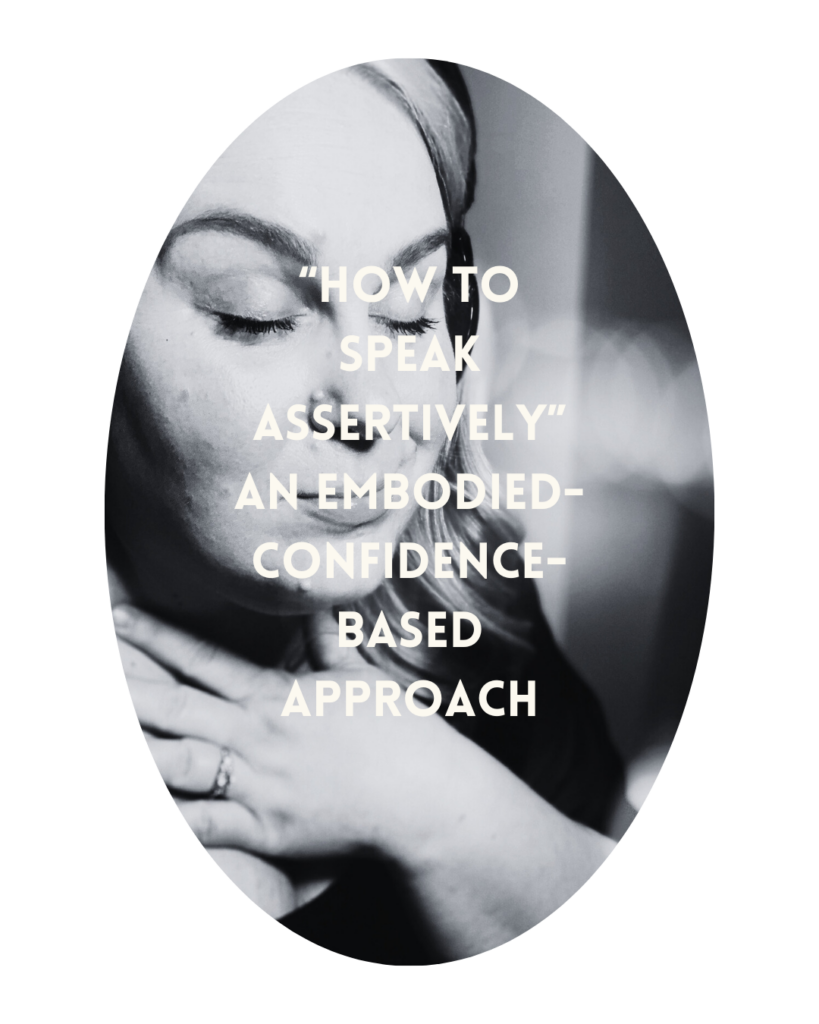© - Content and images in this blog are copyright Elise Besler of EB Voice Empowerment, unless stated otherwise. Feel free to repost or share images for non-commercial purpose, but please make sure to link back to this website and its original post.
℗ - We do not store any information about your visit to our website other than for analytics and optimization for content and reading experience through the use of cookies.
℅ - Our site does at times contain paid advertisements, sponsored content, and/or affiliate links.
Reader Etiquette
I'm your go-to expert for helping to ditch the fear and own your voice. Whether you’re speaking, singing, or setting boundaries, I help you go beyond technique -rewiring your nervous system so full expression feels natural, effortless, and so you.
Hi! I'm Elise Besler - Voice Coach & Somatic practitioner
February 25, 2025

Speaking assertively isn’t about being the loudest person in the room—it’s about communicating clearly, confidently, and with self-respect. If you struggle with speaking up, setting boundaries, or expressing your needs, learning how to speak assertively can help you feel more empowered in conversations.
But here’s the truth: Assertive communication isn’t just about words—it’s about how safe your body feels when you use your voice. Your nervous system plays a huge role in how you express yourself, and working with it (instead of against it) can help you become a more naturally assertive speaker.
Let’s break down how to speak assertively with a nervous system-aware approach.
What Does It Mean to Speak Assertively?
Assertive communication sits between passive communication (not speaking up at all) and aggressive communication (overpowering others). It allows you to express yourself clearly, respectfully, and confidently—without people-pleasing or steamrolling others.



Assertiveness is about balancing confidence with respect, both for yourself and others.
Why Is Assertive Speaking Difficult? (Hint: It’s Not Just Mindset)
If speaking up makes you nervous, your nervous system might perceive it as a threat. This can trigger:




The solution? Instead of forcing yourself to be assertive, you can train your body to feel safe and steady when speaking up.
How to Train Yourself to Speak Assertively
1. Regulate Your Nervous System Before Speaking
Before entering a conversation where you need to be assertive, send safety signals to your body:



When your body feels safe, your voice will follow.
2. Use Assertive Body Language
Your words are important, but so is your nonverbal communication. Assertive body language reinforces your message:




3. Speak with Clarity and Confidence
How you say something matters as much as what you say. To sound assertive:


4. Set Boundaries with Your Words
Assertiveness is essential in boundary-setting. If saying “no” makes you uncomfortable, try:



5. Practice in Low-Stakes Situations
Speaking assertively is a muscle—the more you use it, the stronger it gets. Start small:



With consistent practice, assertiveness becomes second nature.
Final Thoughts: Assertiveness is a Skill, Not a Personality Trait
You don’t have to be born assertive—you can train yourself to speak with clarity, confidence, and self-respect.





Every time you assert yourself—even in small ways—you build trust in your voice. And that trust? That’s what true confidence is made of.
What’s one small way you can practice assertive speaking today? Let me know in the comments!
— If you’ve ever struggled to speak up, felt your voice shake in high-stakes moments, or questioned if your words truly mattered, this practice is for you! —
Click HERE for immediate access to the FREE “Find Your Voice” Guided Audio Training.
Take 11 minutes to activate the power of your voice with this guided practice. Includes: Grounding, breath-work and voice-work exercises to help you regulate your nervous system and build a confident voice.

Leave a Reply Cancel reply
Grab
THE "Find YOUR VOICE" AUDIO TRAINING
Welcome, Friend! Around here, we believe that embodiment is sacred, and that every voice deserves to take up space.
This is a space rooted in anti-racism, body liberation, queer-affirming practices, and a commitment to trauma-aware, nervous system-informed growth.